Constraints
HOME Cell numerators and denominators are defined using Groups and Constraints. Like the i2b2 Query Tool, constraints within a group have an “or” relationship and relationships between different groups have an “and” relationship. Constraints allow users to drag-and-drop concepts and then to define temporal relationships for the concept within the constraint. Available constraints are Occurence, Value, and Age constraints.
Occurrence Constraints are used to define relationships related to one or two concepts over time. When only one concept is being used, the concept can be configured to have occurred during the reference interval (see below) or to have occurred anytime during the evaluation dates. When two concepts are being using it is also possible to configure the constraint for relationships between the concepts and to require that one or both of the concepts occur during the reference period.
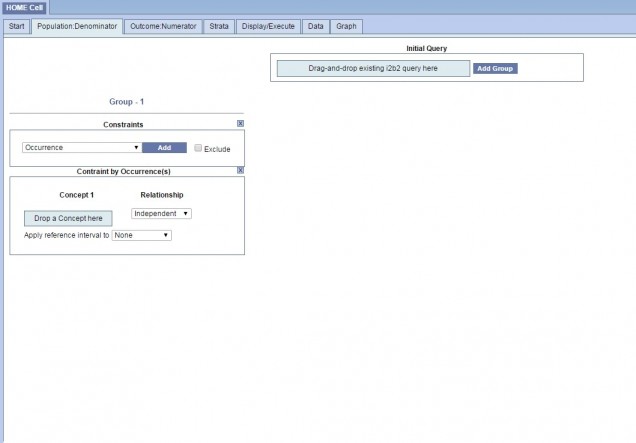
Value Constraints are used to define relationships between one or two concepts where the value of the concept (typically labs) needs to be considered. This contraint allows specification of numeric operations such as average, min, max, earliest, latest or sum or to the text value for non-numeric values (diagnoses = problem, primary, secondary, etc.). Value constraints can further be configured to require that the results preceed or follow the first or latest occurrences of another concept by a min or max number of days. The Value can also be filtered to include only values with a certain range of values.
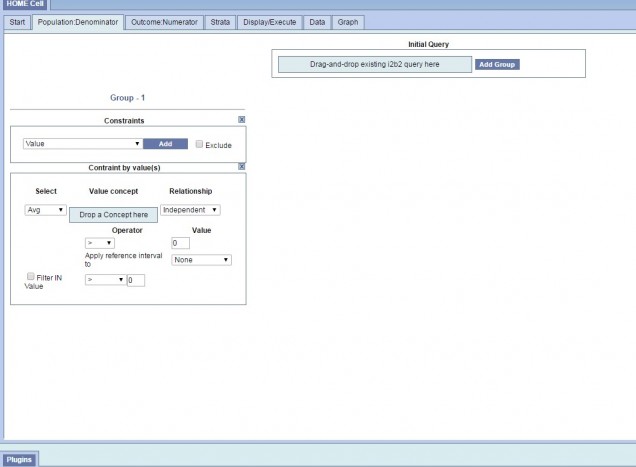
Age Constraints are used to define an age or age range when a concept occured. The age contraint can also be configured to require that the patient be the age during the reference interval or at anytime during the evaluation dates.
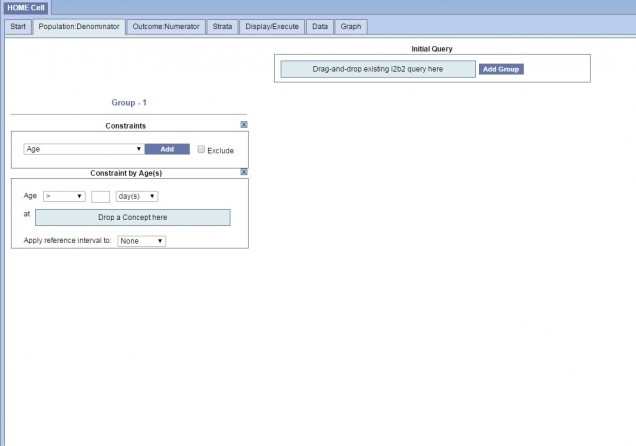
Reference Intervals are used to indicate a reference period type (month, year, or date interval) to use when reporting the target outcome and is selected on the Display/Execute tab. During configuration of constraints, the reference interval can be applied to one or both concepts. When the reference interval is applied to a concept, the query only includes concept entries with a start date during the reference interval. For example, if the reference interval is applied to Body Mass Index (BMI) values and “year” is the interval selected, then only patients with at least one BMI measurement during each year will be included.
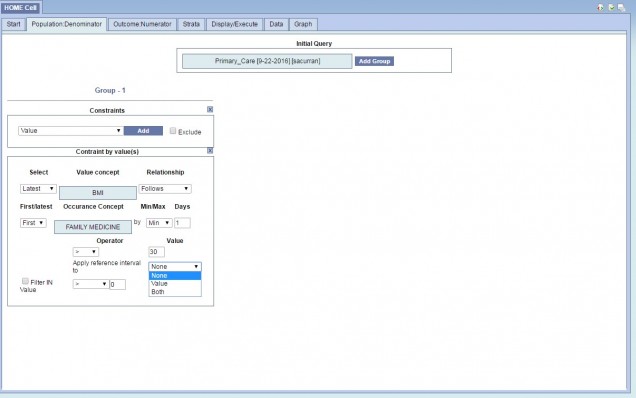
Below are examples of clinical concepts and a screen shot of the constraint configuration in the HOME Cell to provide examples of the constraints described above.
Example 1:
Clinical concept: Include patients with a systolic blood pressure following their first diagnosis of hypertension by at least 1 day to ensure that only blood pressure after earliest diagnosis of hypertension are included in the query
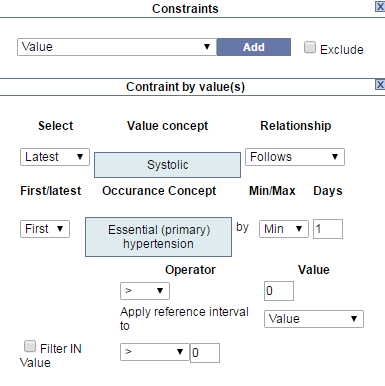
Example 2:
Clinical concept: Patients who had at least one primary care visit during the reference year and who were > 18 years at the time of that visit
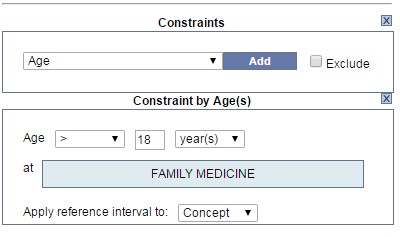
Note: The was > 18 years old at the time of the visit AND the visit occurred during the reference interval (which in this case would be specified as “Year”)
Example 3:
Clinical Concept: Patients who’s latest Body Mass Index Value was > 30 during the reference year, excluding values < 5 or greater than 60 to ignore data entered incorrectly
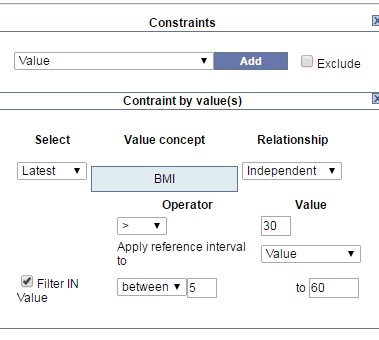
Note: Only the most recent BMI each year will be used to be counted must between and 60 and be greater then 30
Example 4:
Clinical Concept: Patients whose most recent Systolic BP was <140 AND most recent Diastolic BP was <90 during each reference year, including only BP readings that followed a diagnosis of hypertension, and excluding any blood pressures less than 30 or greater than 300 mmHg.
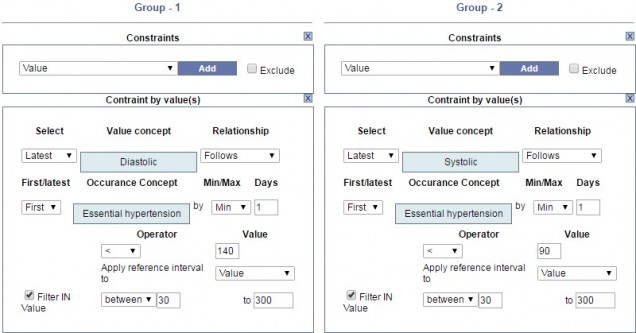
Note: Blood pressures in the MHDR are stored as separate systolic and diastolic values. Generally the values would occur simultaneously, however there could be a systolic without an accompanying diastolic or one of the values could be filtered out.